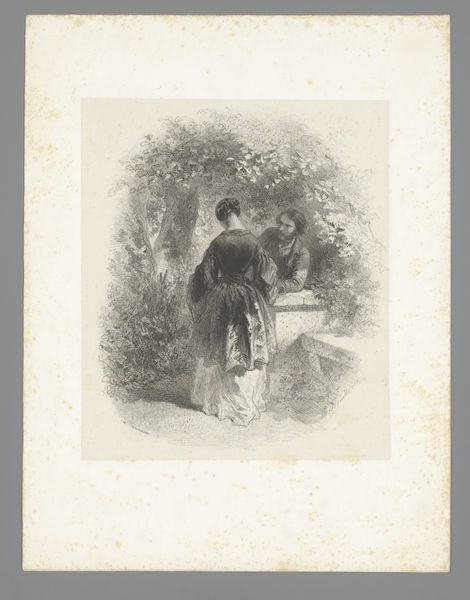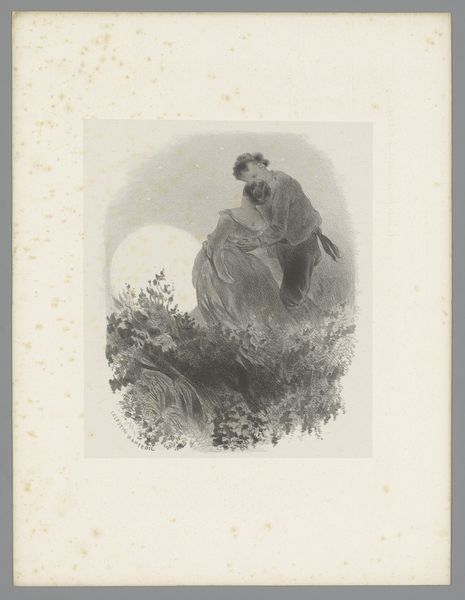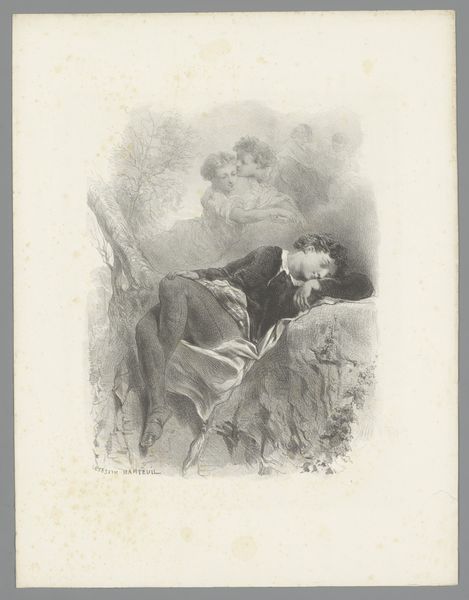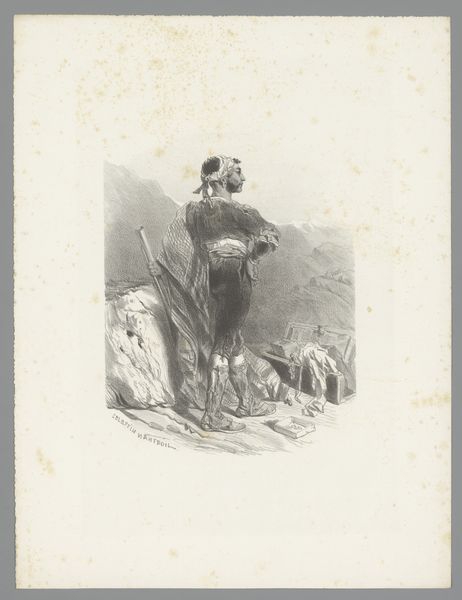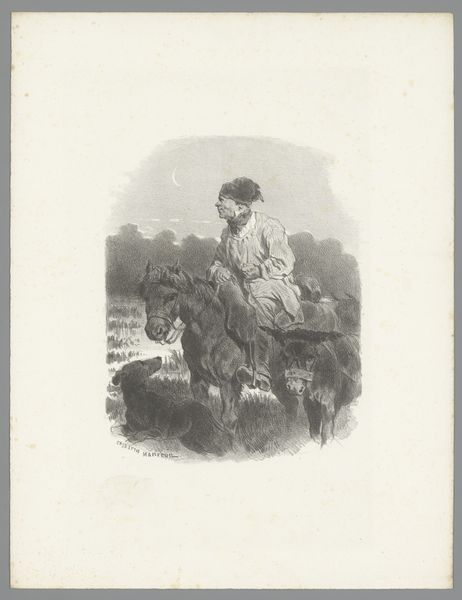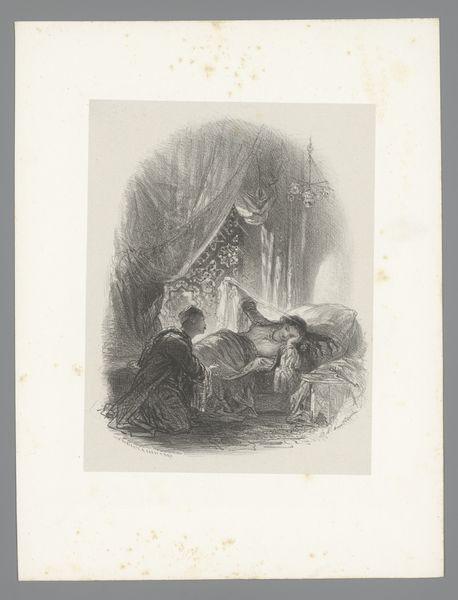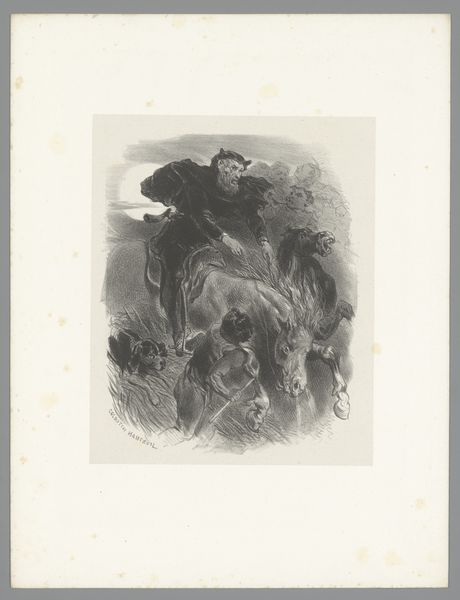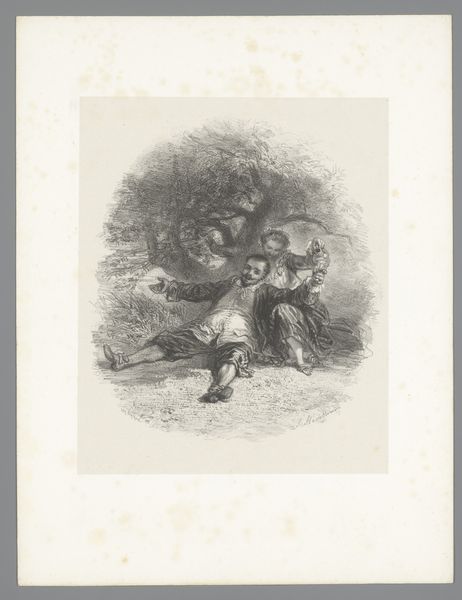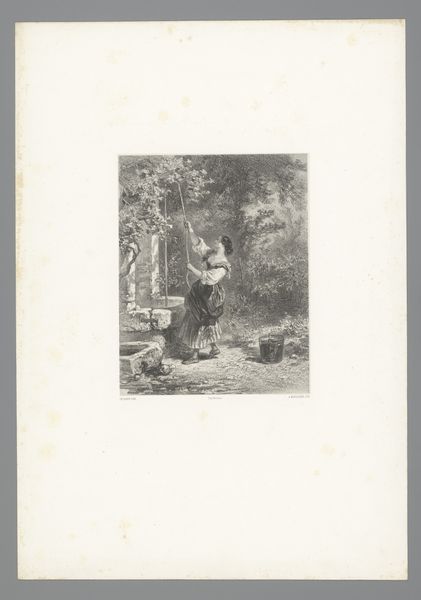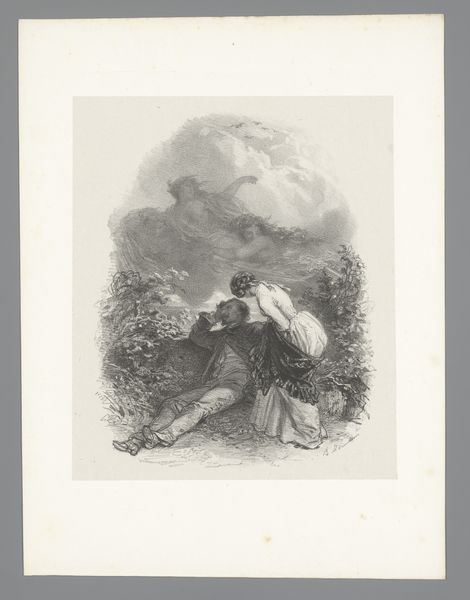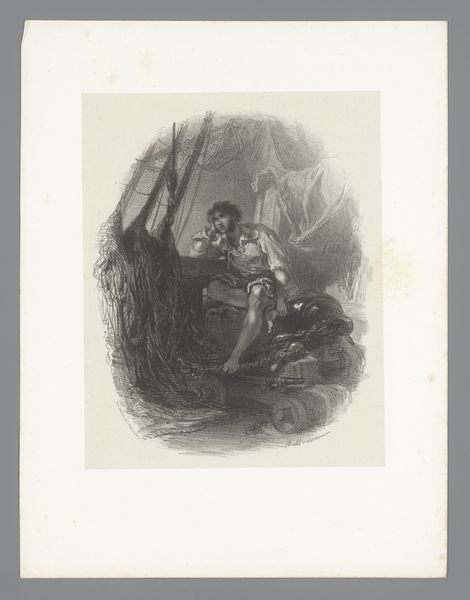
print, engraving
# print
#
old engraving style
#
landscape
#
figuration
#
romanticism
#
genre-painting
#
engraving
Dimensions: height 357 mm, width 278 mm
Copyright: Rijks Museum: Open Domain
Curator: Let's turn our attention to this print: "Man and Boy on a Rock Overlooking the Sea" by Célestin Nanteuil, created sometime between 1823 and 1873. Editor: The stark contrast in the engraving immediately evokes a sense of romantic drama. The man's posture, overlooking the sea with the boy, suggests a scene of adventure or perhaps contemplation. Curator: It resonates strongly with the Romanticism movement. Notice how Nanteuil situates his figures within a grand landscape. They appear dwarfed by nature, almost in conversation with it, really emphasizing humanity's small role in the scheme of the universe. What cultural narratives do you feel this artwork conjures? Editor: The pair strikes me as an archetypal father-son duo, gazing at a distant castle on a promontory. I detect both promise and peril encoded into the imagery— the castle can signify a reward, yes, but its formidable height is visually intimidating. And in the lower portion of the print, just below the rocky overlook, there is detail to denote a shipwreck, signifying great loss. Curator: Yes! I see the cultural iconography in what you mean: father and son embodying ideas of patriarchy, but also tutelage. Consider too the shipwreck as part of a broader conversation that addresses issues such as the burden of colonialism and the impact of conflict on future generations. The narrative here isn't merely father teaching son. It could extend to discussions of historical baggage too. Editor: It's intriguing to layer those readings onto the symbolism of the open sea itself – traditionally associated with the unknown, or with endless possibilities. I agree—Nanteuil invites multiple layers of symbolic interpretation. Curator: This makes me think about the socio-political dynamics between men, and how the artwork visualizes not only exploration, but power as it shifts intergenerationally through this paternal dynamic. Editor: I notice how the foliage and seascape around them is stylized, suggesting an almost dreamlike setting, further distancing it from realism, strengthening its connection to enduring cultural symbolism. Curator: I see what you mean; through the artwork, Célestin presents universal conditions such as the cyclical patterns of human existence or society, and how these concepts translate or remain as is for each successive generation. The man, the boy, and even the sea almost exist within their own self-referential, historicizing loop. Editor: "Man and Boy on a Rock Overlooking the Sea" encapsulates how personal narratives intertwine with greater cultural meanings, visualized through the symbolic weight of imagery.
Comments
No comments
Be the first to comment and join the conversation on the ultimate creative platform.
